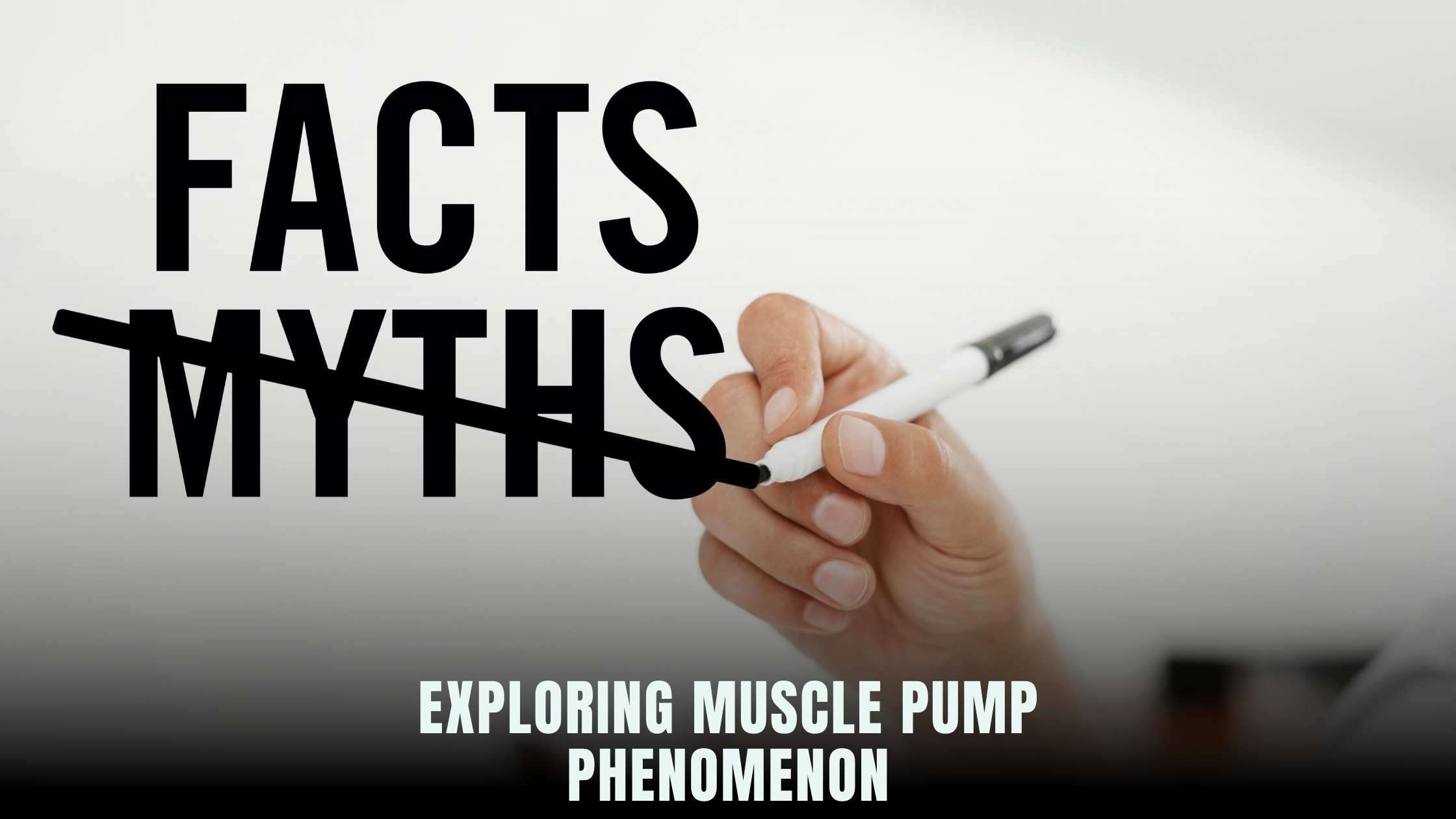Debunking Muscle Pump Myths: Separating Fact from Fiction


Debunking Muscle Pump Myths: Separating Fact from Fiction
Muscle pump, also known as “the pump,” is a phenomenon experienced by many athletes and fitness enthusiasts during and after intense workouts. It’s often accompanied by a feeling of tightness and swelling in the muscles, giving the impression of increased size and vascularity. While muscle pump is a common topic in the fitness community, there are several myths and misconceptions surrounding it. In this article, we’ll debunk some of the most prevalent muscle pump myths, separating fact from fiction.
Myth 1: Muscle Pump Equals Muscle Growth
One of the most common misconceptions about muscle pump is that it directly correlates with muscle growth. While experiencing a pump can indicate increased blood flow to the muscles, which may contribute to muscle hypertrophy over time, it’s not a definitive indicator of muscle growth. The temporary swelling and tightness associated with muscle pump are primarily due to increased blood volume and metabolic byproducts accumulating in the muscles during exercise.
Myth 2: Muscle Pump Leads to Permanent Muscle Gains
Another myth surrounding muscle pump is that it leads to permanent muscle gains. While achieving a pump can provide a temporary increase in muscle size and definition, especially during resistance training workouts, these effects are transient and typically subside within hours after the workout. True muscle growth occurs through consistent training, proper nutrition, and adequate recovery over time, rather than from the temporary effects of muscle pump.
Myth 3: Muscle Pump Indicates a Better Workout
Some individuals believe that the intensity of their workout is directly proportional to the magnitude of the muscle pump they experience. While achieving a pump can be satisfying and may indicate an effective workout, it’s not the sole measure of workout quality. Factors such as exercise selection, intensity, volume, form, and progressive overload play crucial roles in stimulating muscle growth and strength gains, regardless of the presence or absence of muscle pump.
Myth 4: Muscle Pump is Necessary for Muscle Growth
Contrary to popular belief, muscle pump is not a prerequisite for muscle growth. While it can be a byproduct of certain training techniques and rep ranges, such as high-repetition sets and occlusion training, it’s not essential for stimulating muscle hypertrophy. Many effective strength training programs focus on heavy, compound movements that may not always produce a significant pump but still yield substantial gains in muscle mass and strength over time.
Myth 5: Muscle Pump is Always Beneficial
While muscle pump can be a motivating factor and provide a satisfying sensation during workouts, it’s not always beneficial, especially for individuals with specific health conditions. Excessive muscle pump, particularly in the arms, may increase blood pressure and intramuscular pressure, leading to discomfort, reduced range of motion, and increased risk of injury. It’s essential to listen to your body and avoid chasing the pump at the expense of proper form and safety.
Relevant SaaS Products for Fitness Enthusiasts
For fitness enthusiasts looking to optimize their training routines and track their progress, various SaaS products can be invaluable tools. Here are some relevant solutions tailored to the needs of fitness enthusiasts:
1. MyFitnessPal
MyFitnessPal – MyFitnessPal is a popular fitness app that allows users to track their daily nutrition intake, set fitness goals, and monitor their progress over time. With a vast database of food items and macronutrient breakdowns, MyFitnessPal helps users make informed dietary choices and stay accountable to their fitness goals.
2. Fitbit
Fitbit – Fitbit offers a range of wearable fitness trackers and smartwatches that monitor metrics such as heart rate, steps taken, calories burned, and sleep quality. Fitbit devices provide real-time data and personalized insights to help users optimize their activity levels, sleep patterns, and overall health and wellness.
3. Strava
Strava – Strava is a social fitness platform focused on running and cycling activities. Users can track their workouts using GPS, analyze performance metrics, and share their achievements with a community of like-minded athletes. Strava also offers challenges, leaderboards, and training plans to help users stay motivated and engaged in their fitness journey.
4. TrainingPeaks
TrainingPeaks – TrainingPeaks is a comprehensive training and coaching platform used by athletes and coaches to plan, track, and analyze their workouts. Users can create customized training plans, log their training sessions, and receive feedback from certified coaches to optimize their performance and achieve their athletic goals.
5. Gymaholic
Gymaholic – Gymaholic is a workout tracking app that provides users with personalized training programs, exercise demonstrations, and progress tracking tools. With features such as workout logging, rep counting, and rest timers, Gymaholic helps users stay organized and focused during their gym sessions, maximizing their training efficiency and results.
Leveraging Subscribed.FYI Deals for Fitness Tools
For fitness enthusiasts seeking to enhance their training experience and achieve their fitness goals more effectively, Subscribed.FYI offers exclusive deals and discounts on a wide range of fitness-related SaaS products. By signing up for free, users can access valuable resources, tools, and services to support their fitness journey and optimize their health and wellness.
Relevant Product Links:





